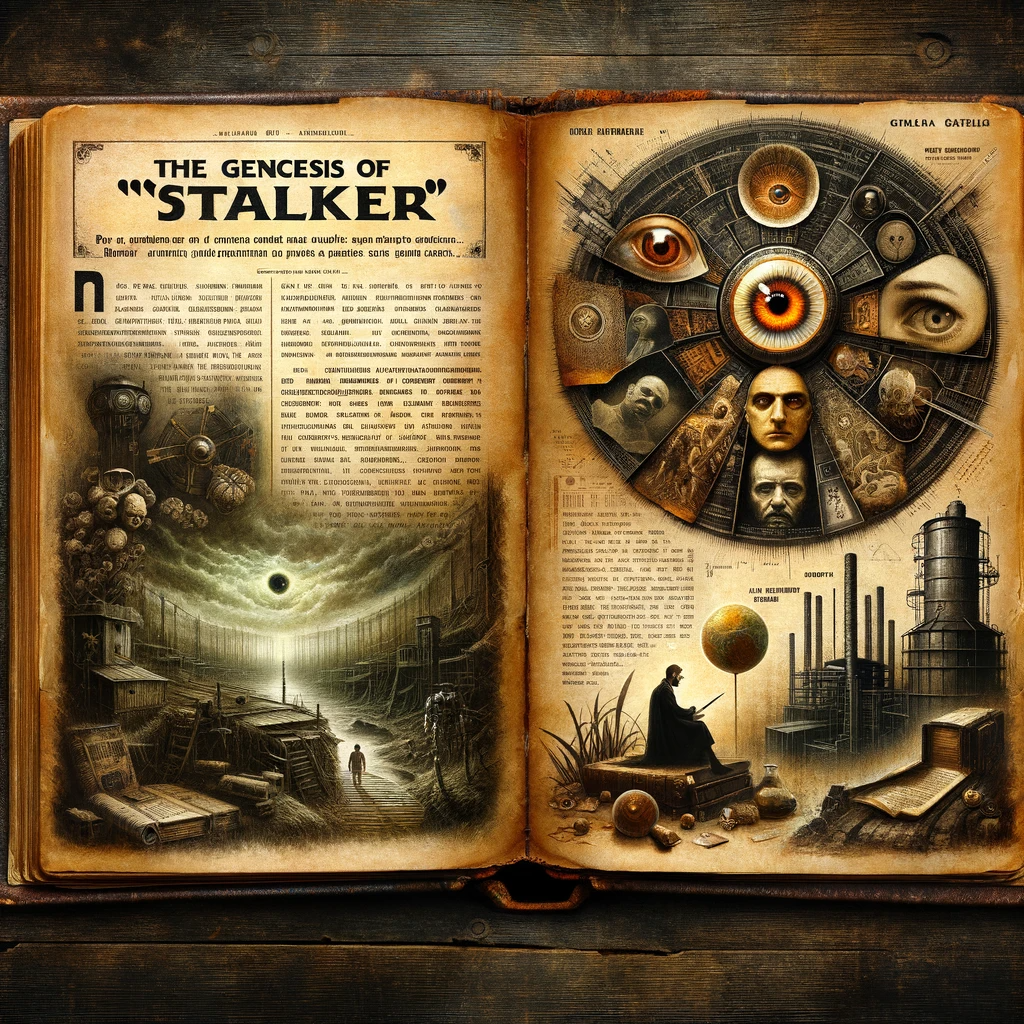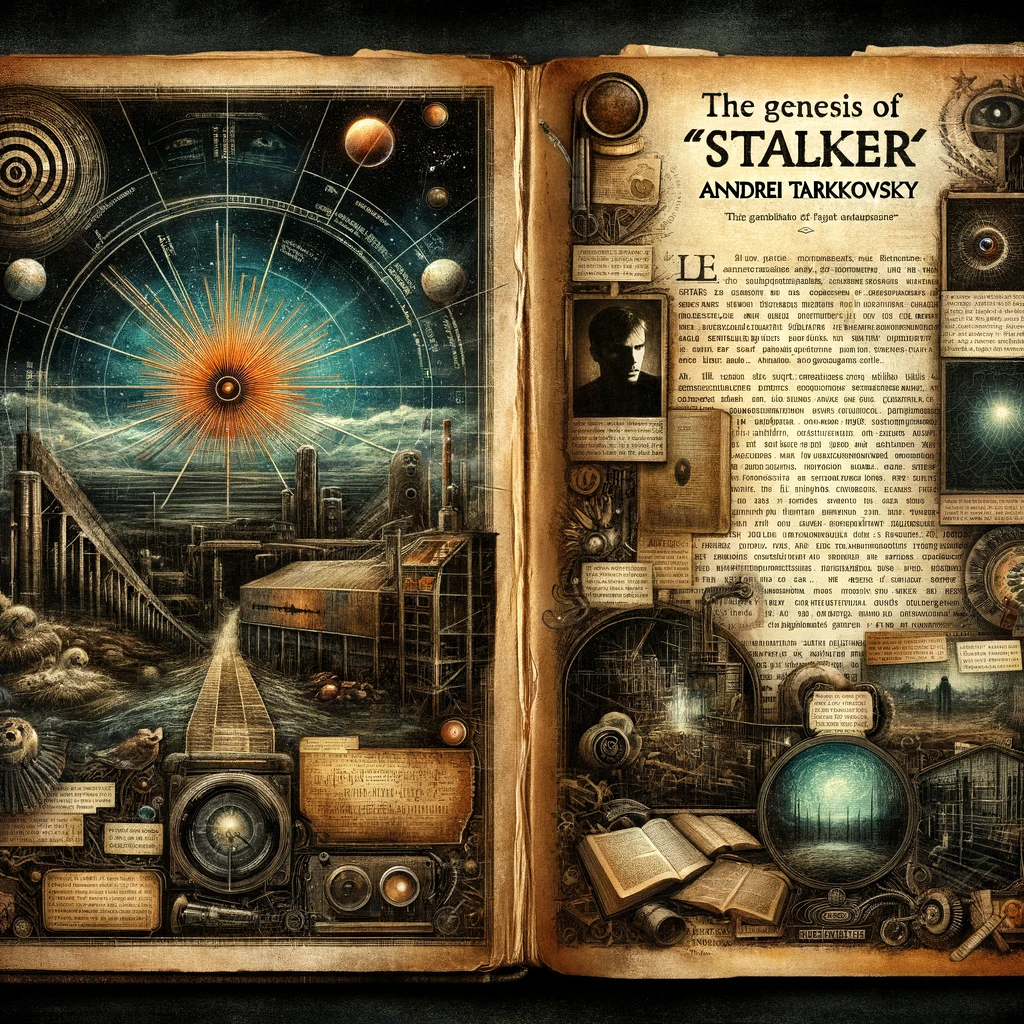Article about Genesis of “Stalker”
- Introduction
- Setting the stage for the article
The significance of exploring the genesis of “Stalker” - The Vision Takes Shape
- The initial concept and inspiration
The creative minds behind the game - Inspiration from “Roadside Picnic”
- The influence of the Strugatsky brothers’ novel
The concept of mysterious Zones - Overcoming Early Development Hurdles
- Challenges and delays faced in the early stages
Technical difficulties and gameplay complexities - The Team’s Dedication
- The unwavering commitment to the game’s vision
Creative problem-solving and innovation - Crafting an Immersive World
- Designing the post-apocalyptic setting
Building an atmospheric and immersive experience - Innovations in Gameplay
- The unique gameplay mechanics introduced
The impact on the gaming industry - The Birth of “Stalker”
- The moment of the game’s inception
The anticipation leading up to its release - Conclusion
- Recap of the genesis of “Stalker”
The enduring legacy of the game - FAQs
- Frequently asked questions about the genesis of “Stalker” and its development
Introduction
In the world of gaming, the birth of a truly iconic title is often shrouded in mystery and creativity. One such game that has captured the imaginations of players worldwide is “Stalker.” This article delves deep into the genesis of “Stalker,” exploring its origins, the visionary minds behind it, the influence of “Roadside Picnic,” overcoming early development hurdles, the team’s unwavering dedication, the creation of an immersive world, innovations in gameplay, and the moment of the game’s inception.
The Vision Takes Shape
Every great game begins as a concept—a spark of creativity that gradually takes shape. “Stalker” was no exception. The initial vision for the game aimed to deliver a unique gaming experience, one that would immerse players in a world of intrigue, danger, and post-apocalyptic mysteries. The concept was ambitious, and it needed the right creative minds to bring it to life.
The team behind “Stalker” consisted of individuals who shared a passion for pushing the boundaries of game development. Their collective vision was to craft a game where reality was distorted, and every corner held the promise of discovery. As they began to shape this vision, it became evident that “Stalker” was destined to become something extraordinary.
Inspiration from “Roadside Picnic”
One of the most significant influences on the genesis of “Stalker” was the science fiction novel “Roadside Picnic” by Arkady and Boris Strugatsky. This literary masterpiece introduced readers to the concept of mysterious and hazardous Zones, areas where reality was altered by inexplicable forces. The novel’s portrayal of these Zones and the adventures of the “Stalkers” who explored them left an indelible mark on the gaming industry.

“Stalker” drew inspiration from the Strugatsky brothers’ novel, infusing its own unique elements into the narrative. The concept of Zones and the sense of danger and wonder they conveyed became central to the game’s identity. “Stalker” aimed to capture the essence of “Roadside Picnic” while adding its own layers of complexity and intrigue.
Overcoming Early Development Hurdles
The early stages of “Stalker’s” development were not without their challenges. The game faced delays and technical difficulties that threatened to derail the project. Issues with game stability, mechanics, and the sheer complexity of creating an immersive world tested the team’s resilience.
However, instead of being discouraged by these challenges, the development team embraced them as opportunities for growth and innovation. They were determined to overcome technical hurdles and refine gameplay mechanics to ensure that “Stalker” lived up to its potential. The development journey was marked by dedication, perseverance, and a commitment to delivering an exceptional gaming experience.
The Team’s Dedication
Throughout the development of “Stalker,” the team’s dedication to their creative vision remained unwavering. They poured countless hours into solving complex technical problems, fine-tuning gameplay mechanics, and crafting a world that would immerse players like never before.
Creative problem-solving and innovation were at the core of the team’s approach. They were driven by a shared passion for the project and a desire to create something that would leave a lasting impact on the gaming industry. Their dedication would ultimately lead to the birth of “Stalker.”
Crafting an Immersive World
One of the defining aspects of “Stalker” is its immersive and atmospheric world. The game’s setting, a post-apocalyptic landscape filled with danger and mystery, was meticulously designed to captivate players. Every detail, from the decaying buildings to the haunting landscapes, contributed to the game’s unique atmosphere.
Creating an immersive world required a deep understanding of environmental storytelling. The team’s ability to convey a narrative through the game’s environment added depth and complexity to the player’s experience. The result was a world that felt both haunting and mesmerizing, drawing players deeper into the mysteries of the Zone.
Innovations in Gameplay
“Stalker” introduced a series of groundbreaking innovations in gameplay that set it apart from traditional first-person shooters of its time. These innovations not only challenged players to think strategically but also contributed to the game’s lasting impact on the gaming industry.
One of the most notable innovations was the inclusion of survival elements. In “Stalker,” players had to contend with hunger, radiation exposure, and inventory management. These aspects added layers of depth and complexity to the player’s journey through the Zone. Managing supplies and resources became critical to survival, creating a sense of tension and urgency that was uncommon in the genre.
The concept of environmental storytelling was another significant innovation. “Stalker” excelled at conveying its narrative not just through dialogue and cutscenes but through the game world itself. Every decaying building, abandoned vehicle, and mysterious anomaly told a story. Players were encouraged to explore and piece together the narrative through their surroundings, fostering a sense of immersion and discovery.
The game’s world-building was nothing short of remarkable. The portrayal of the Zone, with its eerie landscapes and unpredictable anomalies, added to the game’s unique atmosphere. It was a world that felt both haunting and mesmerizing, drawing players deeper into its mysteries. “Stalker” demonstrated that a well-crafted game environment could be as compelling a character as any protagonist.
Another innovative aspect of “Stalker” was the dynamic AI behavior. The game’s NPCs (Non-Playable Characters) exhibited realistic and adaptive responses to the player’s actions. This dynamic AI created an ever-evolving and unpredictable gameplay experience, ensuring that no two playthroughs were the same. Players had to strategize and adapt to the changing behaviors of both human and mutant adversaries.
Furthermore, “Stalker” challenged the conventional notion of a linear narrative. The game’s multiple endings and non-linear storytelling allowed players to shape the outcome of their journey. Choices made throughout the game had consequences, giving players a sense of agency and investment in the narrative.
These gameplay innovations set “Stalker” apart from its contemporaries and influenced the direction of the first-person shooter genre. The game’s emphasis on immersion, realism, and strategic thinking opened new doors for game developers, inspiring many to rethink the way they approached game design.
The Birth of “Stalker”
The moment arrived when “Stalker” was ready to make its debut. The anticipation leading up to its release was palpable, as players eagerly awaited the chance to step into the mysterious and dangerous world of the Zone. The game’s inception marked the culmination of years of hard work, creativity, and dedication.
As “Stalker” was unleashed upon the gaming world, it became clear that the game had achieved something extraordinary. The immersive storytelling, innovative gameplay, and atmospheric world-building captivated players and critics alike. “Stalker” had officially arrived, leaving an indelible mark on the gaming industry.
The release of “Stalker” was a momentous occasion for both the development team and the gaming community. It represented the realization of a creative vision that had been nurtured and refined over the years. Players around the world finally had the opportunity to step into the shoes of a “Stalker” and venture into the Zone, a place where reality was distorted, and danger lurked around every corner.
The game’s success was evident from the moment it hit the shelves. Players were drawn to the immersive world of “Stalker,” where every decision mattered, and every encounter was filled with tension and excitement. The game’s portrayal of the Zone, with its decaying buildings, haunting landscapes, and unpredictable anomalies, left a lasting impression on those who explored it.
Critics and reviewers were quick to praise “Stalker” for its innovative gameplay mechanics, atmospheric storytelling, and the sheer depth of the world it presented. It was clear that “Stalker” had raised the bar for first-person shooters, setting a new standard for immersion and player engagement.
The birth of “Stalker” marked not just the arrival of a game but the beginning of a new era in gaming. It was a testament to the power of creativity, dedication, and the pursuit of excellence in game development. As players embarked on their journeys into the Zone, they were reminded that in the world of gaming, true innovation could transport them to places beyond imagination. “Stalker” had officially become a part of gaming history, leaving an indelible legacy that would continue to shape the industry for years to come.

Conclusion
In conclusion, the genesis of “Stalker” is a testament to the power of creativity, resilience, and the pursuit of excellence in game development. From its early concept to its inception, “Stalker” was marked by innovation, dedication, and the desire to create a truly unique gaming experience. The game’s enduring legacy continues to shape the world of gaming, reminding us of the lasting impact that a well-crafted and immersive gaming experience can have.
FAQs
- What is the genesis of “Stalker”?
- The genesis of “Stalker” refers to the early concept and development of the game, which aimed to create a unique gaming experience.
What inspired the development of “Stalker”? - The game drew inspiration from the science fiction novel “Roadside Picnic” by Arkady and Boris Strugatsky, particularly the concept of hazardous Zones.
What challenges did the development team face during the genesis of “Stalker”? - The development team faced challenges such as delays, technical difficulties, and the complexity of creating an immersive world.
How did the team overcome these challenges? - The team overcame challenges through dedication, creative problem-solving, and a commitment to delivering an exceptional gaming experience.
What innovations did “Stalker” introduce in gameplay?
